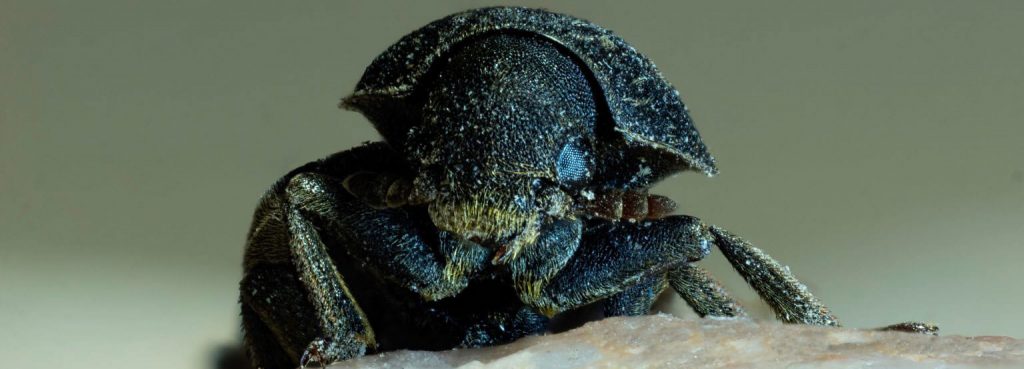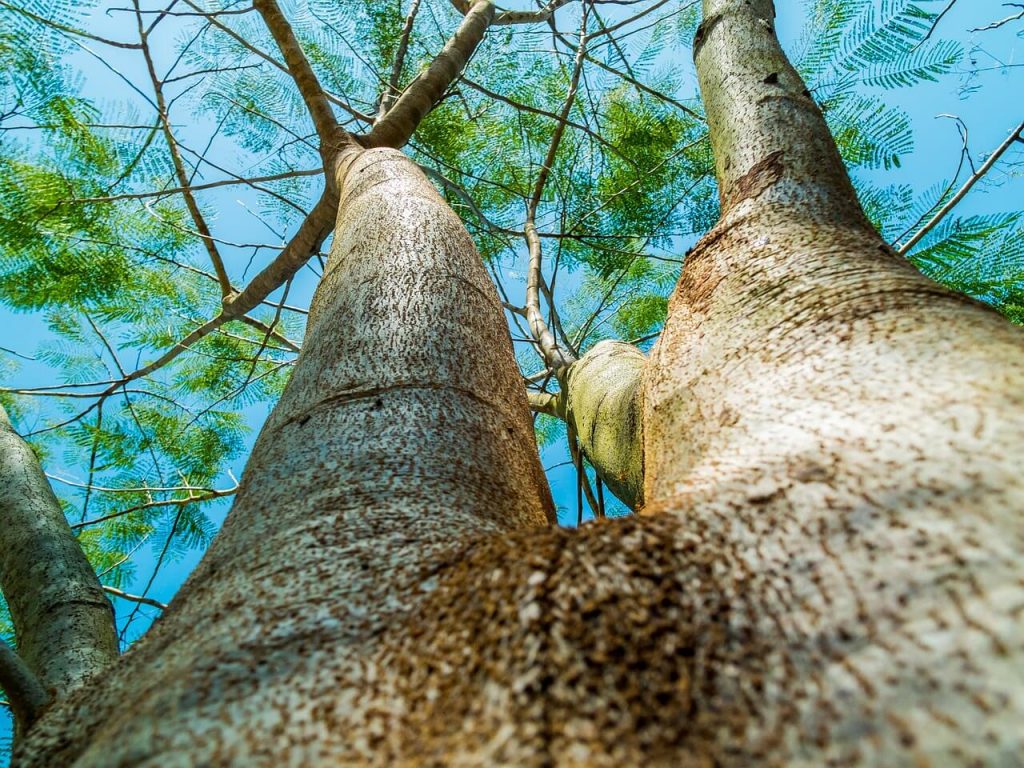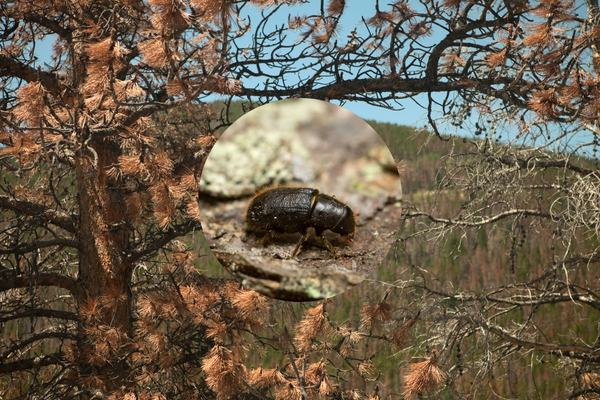Mountain Pine Beetles
Mountain pine beetles (known also as Dendroctonus ponderosaeand MPB) are small insects/beetles that can wreak havoc predominantly on pine trees including ponderosa pine, lodgepole pine and limber pine. These beetles are native to North America and all the species of pine found in Colorado are susceptible to them when beetle populations increase. This includes ornamental pines.
One of the main ways mountain pine beetles spread is through flight – adult beetles typically start looking for a new host tree in July/August, but in some cases they may emerge earlier or later in the summer.
Understanding the Mountain Pine Beetle
Mountain Pine Beetles (MPB) are small, dark brown to black insects that are about the size of a grain of rice. Despite being tiny in size, they pose a massive threat to pine trees, particularly Ponderosa, Lodgepole, Scotch and Limber pines that are commonly found in the Foothills of Colorado.
Since MPB are attracted to trees that are showing signs of stress, trees that are facing overcrowding, drought or advanced age are more susceptible to an infestation. Once a mountain pine beetle selects a suitable tree, these beetles burrow beneath the tree bark to lay their eggs, introducing a blue-stain fungus that disrupts the tree’s ability to absorb water and nutrients, eventually leading to the death of the tree.

Did you know? The mountain pine beetle is the most aggressive, persistent and destructive bark beetle in the western United States (and Canada). Source.
Signs of an Mountain Pine Beetle Infestation
Early detection is key to being able to manage Mountain Pine Beetles. When assessing your property, it is important to watch for these signs:
- Pitch Tubes: Small, popcorn-like resin blobs located on the tree bark that are usually light pink to reddish in color.
- Boring Dust: Fine sawdust at the base of the tree or in the crevices of the bark.
- Discolored Needles: The needles will start to fade from green to yellow and then as the tree begins to die, they will start to go to a reddish-brown.
- Blue-Stained Wood: The stained wood is visible when the bark is peeled back. This staining is caused by the fungus that is carried by the beetles.
If you notice any of these signs, it’s important to act quickly to prevent the spread to other trees nearby that are currently healthy.
Risks of Ignoring Mountain Pine Beetles
Once a tree has been infected, the Mountain Pine Beetles can begin to spread rapidly. One, single infested tree can produce thousands of beetles, which can infect neighboring trees within the same season. If the infestation is ignored it could lead to:
- Widespread Death of Trees: This can result in unsightly landscapes and an increased risk of wildfire due to the dead timber.
- Property Damage: Trees that are dead or dying have a higher probability of falling, which could lead to trees falling on structures, vehicles or power lines.
- Decrease in Property Value: The death or decline of mature trees not only affects the aesthetic appeal of your property, but it may also (negatively) impact the value of your property.
Quick Fact About MPB

Since 1996, about 3.4 million acres of lodgepole and ponderosa pine forests have exhibited MPB-caused tree mortality. Source.
Effective Treatment and Preventative Strategies for MPB
Splintered Forest Tree Services offers comprehensive solutions for home/property owners to help manage and prevent Mountain Pine Beetle infestations from occurring.
Some solutions include:
- Proactive Tree Inspections: Our team of experiences arborists can assess the trees on your property to identify early signs of Mountain Pine Beetle activity and make recommendations for the best course of action for protection.
- Preventative MPB Spraying: We use eco-friendly insecticides to help protect healthy trees from getting infested. The optimal time for spraying typically falls in the late spring to early summer (before the beetles take flight).
- Tree Removal: It is important for infested trees to be properly removed to help keep the beetles from spreading. At Splintered Forest, we follow the strict protocols for disposing of the cut wood.
- Fire Mitigation and Forest Thinning: By completing fire mitigation and reducing the density of the trees, it helps to improve the health of the forest, making it harder for the Mountain Pine Beetles to spread. Properly thinning also reduces the risk of wildfire, which is an benefit for those living in the mountain communities.
Why Choose Splintered Forest Tree Services?
We know you have options when choosing the best company to help you protect and care for your landscape. So what benefits are there for working with Splintered Forest?
- Local Expertise: Our team members live and work here and understand there are unique challenges that you face as a homeowner in the Foothills community (Conifer, Evergreen, Pine, Bailey, etc).
- Comprehensive Solutions: We are a full service tree service provider. From planting to prevention strategies to removal, we provide end-to-end care for your trees.
- ISA Certified Arborists on Staff: Our staff is comprised of multiple ISA Certified Arborists and an ISA Board Certified Master Arborist who have the experience to guide you through the process of preventing Mountain Pine Beetles or properly handling a MPB infestation. To learn more about our crew’s safety practices and certifications, click here.
- TCIA Accreditation: Splintered Forest holds a current accreditation with the Tree Care Industry Association (TCIA). What does this mean? Hiring an accredited tree care company means choosing a team that is committed to safety, professionalism and quality service. TCIA requires companies to meet rigorous standards in safety practices, employee training, and ethical business practices.

Download Our Free MPB Guide
It is important for landowners, foresters and communities to take action if you suspect that there is Mountain Pine Beetle activity or you want to take preventative measures for protection – don’t wait until it’s too late! By monitoring trees for signs of infestation, practicing good forest management techniques, and taking swift action when beetles are detected, we can help protect our valuable pine tree resources and preserve the health of our forests for generations to come.
The team at Splintered Forest Tree Services is ready to help you safeguard your trees and preserve its natural beauty.
Contact us today to request a free consultation!

